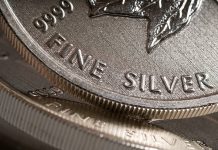The Bank of Japan (BoJ) kept its below-zero interest rate and its faltering yield curve control policy unchanged. No-action sent the Japanese 10-year yield tumbling by up to 14 bp – that’s almost a 30% plunge. The dollar-yen spiked above the 131.50 level, losing more than 2.50% against the greenback.
The BoJ revised its GDP lower for this year, but kept its inflation forecast unchanged at around the 3%. And yet, the producer price inflation in Japan spiked above the 10% in December.
It feels like the BoJ doesn’t want to face the reality, and isn’t acting according to the market’s needs.
Anyway, I think that traders will continue defying the BoJ’s YCC strategy and try to break its back, but we will likely see more volatility in the yen, as the policymakers keep fighting the market – perhaps not to lose face?
On the currency front, we can’t rule out the possibility of an advance above the 133 level, the minor 23.6% Fibonacci retracement on Oct to January retreat. The negative trend in USDJPY will remain intact below the 136 level, the major 38.2% retracement level.
Yen selloff supports the dollar index
If the yen changes direction, the impact on the dollar index will also be felt – and it will be positive.
The dollar index is stronger this morning.
The EURUSD is below the 1.08 mark, and could extend losses toward the 1.0630, the lower end of the actual positive trending channel.
And yet, the ZEW data released yesterday showed that investor expectations for the German economy jumped to the highest level in almost a year and German Chancellor Olaf Scholz said that he is sure Germany will avoid recession this year, thanks to China’s reopening and growing confidence that the energy-price squeeze is easing.
And now that the Euro-area economy is performing better than many anticipated in the face of record inflation and the energy crisis, the European Central Bank (ECB) is expected to raise the rates by 50bp in February and in March, and by another 25bp in May or in June. That should throw a floor under the euro weakness and may not let the euro slide too low against the dollar.
Across the Channel, Cable does particularly well, since Britain revealed a near-record pace of 6.4% in wages growth between September and November year on year. The latter will unlikely ease the anger of those striking for a better pay – headéine inflation in Britain came in at 10.5% in December, as core inflation didnt ease as expected – dwarfing the near-record pay rise. The latest numbers will only force the Bank of England (BoE) to deliver yet another rate hike next month to avert a further wage-price spiral. And that’s positive for sterling.
S&P500 struggles finding buyers above 4000
Confusion and lack of direction best described yesterday’s sentiment in the US.
US futures were pointing at a negative start, then turned higher in early trading as we heard a lot of talk about “green shoots” and “bright spots” in the economy when Chinese Vice Premier talked in Davos yesterday saying that he expects China’s economy to return to normal this year.
The S&P 500 shortly traded above the 4000 level, but reality soon hit the fan with mixed earnings from Goldman and Morgan Stanley, and brought the top sellers in.
And the top sellers kept selling into the 4000 level to the end of the session. Finally, the index closed the session 0.20% lower, spot on the 2022’s down-trending channel top and above the critical 200-DMA.
But the first set of earnings doesn’t support a sustainable move above that 200-DMA level.
If we dive into the latest bank earnings, Goldman Sachs and Morgan Stanley earnings were mixed. Golman reported a 69% drop in Q4 profit as the slump in deal-making and its wealth management business weighed on Q4 results. Goldman shares closed the session almost 6.50% lower.
Morgan Stanley was also hurt by weakness in deal-making, but the wealth management and trading revenue grew. The shares closed almost 6% higher.
Note that Morgan Stanley set aside $85 mio for credit losses compared to only $5 mio a quarter ago, as proof that the bank is not optimistic about what’s to come this year, either. Therefore, the 6% rally was certainly a bit exaggerated.












